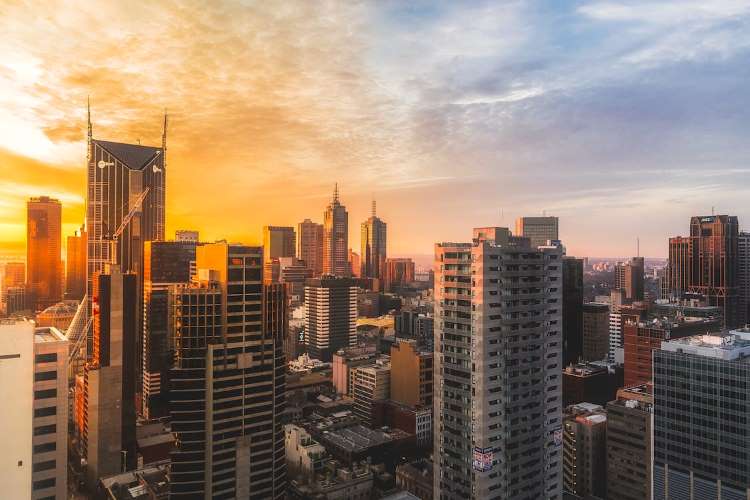The world population is growing at a fast clip, necessitating the creation of sustainable cities, habitats, and infrastructure. There is a huge challenge in accommodating the additional population in a way that reduces the environmental impact. Building sustainable cities, habitats, and infrastructure is an essential part of addressing the climate crisis. As we transition to a low-carbon future, we must consider financing, policy development, and the invaluable native knowledge of indigenous communities.
Fortunately, there are numerous best practices and ESG (Environmental, Social, and Governance) norms that can guide us in creating sustainable communities. Trust in the concept of doing good and being good is key, and ESG represents this commitment. ESG encompasses the environmental, social, and governance pillars, forming the foundation for a sustainable future.
Environmental considerations need prioritisation of green infrastructure — energy-efficient buildings, renewable energy sources, and public transportation systems that reduce reliance on cars. Recycling, waste reduction, protection of natural habitats, and preservation of green spaces can help reduce greenhouse emissions substantially.
READ I Energy transition: India’s innovative policies script a global success story
Sustainable cities, inclusive future
On the social front, the new cities and communities must be inclusive and safe for all residents. This requires investment in affordable housing, public health initiatives, and education programmes that promote equality and opportunity for all.
Governance plays a key role in developing sustainable habitats. The focus should be on improving transparency and accountability in decision-making by involving local communities in the development of cities and infrastructure. Responsible use of public funds and accountability of individuals and organisations for any harm to the environment or society are essential.
Involving local communities in planning and developing sustainable infrastructure is crucial for building climate resilience. Local communities possess invaluable knowledge and expertise that can help identify and address the unique challenges they face. Local communities must be engaged through community consultations, public meetings, and opportunities for input and feedback. Partnership with local organisations, community groups, and stakeholders can help projects align with the priorities of the community.
Education and training opportunities are essential for building local community capacity to participate in sustainable infrastructure projects. Training programs on sustainable building practices, renewable energy technologies, and climate resilience strategies empower communities to contribute to such projects and drive sustainable practices in their areas.
Native knowledge from indigenous communities also plays a critical role in building sustainable cities and infrastructure. Indigenous communities possess deep understanding of their local environments and ecosystems, and their traditional knowledge can inform sustainable development practices. Collaboration between government, businesses, and indigenous communities is needed to incorporate this knowledge into policy and planning.
Many successful sustainable communities and infrastructure projects worldwide serve as examples. From the eco-cities in Scandinavia to the green infrastructure initiatives in Singapore, we have proven that it is possible to build environmentally and socially responsible sustainable cities and infrastructure.
While constructing sustainable cities, habitats, and infrastructure is crucial, the cost of sustainable construction can be a barrier. There are ways to cut these costs and to make sustainable construction more accessible. Energy-efficient techniques such as solar panels, green roofs, and rainwater harvesting systems can lower operational costs over time. Designing buildings with durability and longevity in mind reduces the need for frequent repairs and maintenance.
Financing sustainable projects is also a key consideration. Public-private partnerships and innovative financing mechanisms such as green bonds and impact investing funds offer access to financing, expertise, and resources that are otherwise unavailable. Governments, businesses, and communities must coordinate to build renewable energy projects, energy efficient buildings, public transport, and other sustainable infrastructure. This will reduce greenhouse gas emissions, improve air, and water quality, and create healthier communities.
Raising awareness and garnering support for sustainable construction is important. By educating and engaging stakeholders, including local communities, policymakers, and businesses, we can create a demand for sustainable buildings and infrastructure. This will drive down costs and increase access to financing.
The adaptation challenges are immense, and there is a need to innovate, collaborate, and invest in sustainable solutions for the future. Individuals can make a difference by living sustainably, reducing the carbon footprint, and supporting sustainable initiatives in communities. Governments must prioritise sustainability in policies and investments, while involving communities and stakeholders in policy development to ensure effectiveness and equity.
However, financing, policy development, and native knowledge must be combined with a strong commitment to social equity and justice. Sustainable development must benefit all citizens, including marginalised communities and low-income populations disproportionately affected by climate crisis. This transition must be inclusive and guided by a commitment to equity and justice, ensuring that the benefits of development are shared by all citizens. The world must act in a concerted way before it is too late.
The Sustainable Development Goal 11 (SDG11) seeks to make cities and human settlements inclusive, safe, resilient and sustainable. It is estimated that at least 7o% of the global population will live in urban areas by 2050. While being the drivers of economic growth, contributing 80% of the global GDP, cities also emit more than 70% of greenhouse gases. Well-planned sustainable urban centres are key to achieving a sustainable future.

